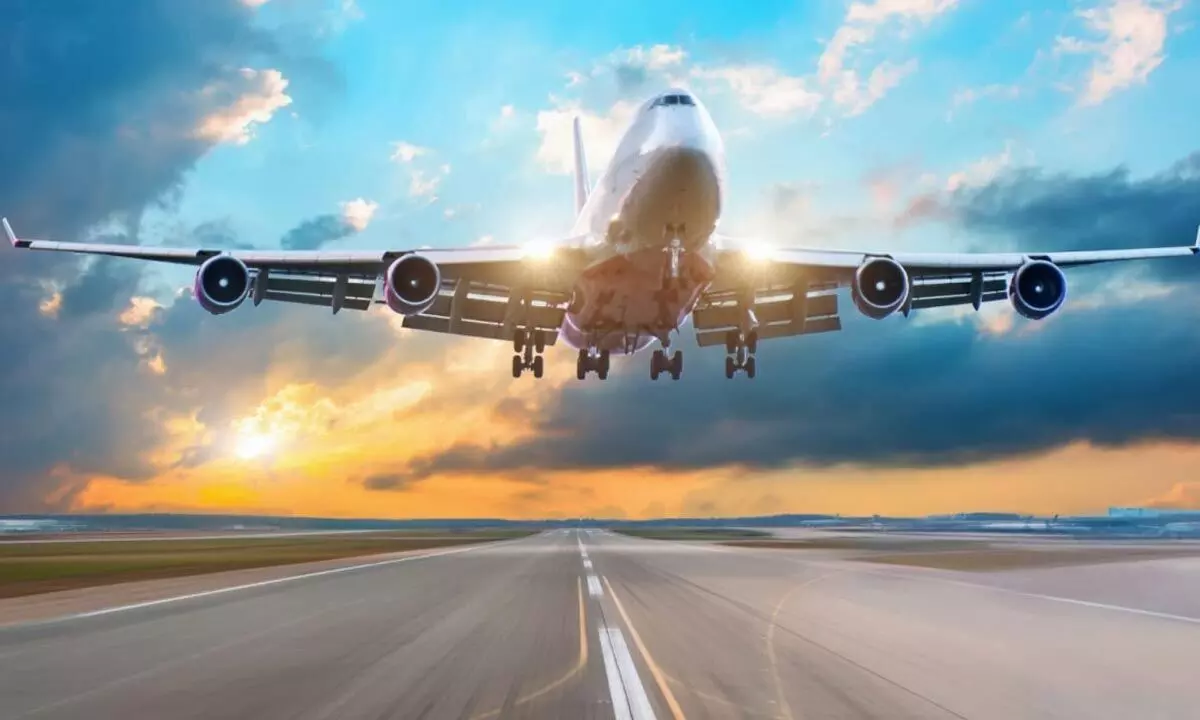A Phoenix-like resurrection for airlines from Covid crisis
Following drop in passenger footfall, many expanded cargo services, post-Covid
image for illustrative purpose

Ethiopian's success is similar to that achieved by Korean and Asiana. Taking advantage of the drop in capacity and using its fleet of dedicated freighter aircraft, and a large number of converted passenger planes, Ethiopian ramped up cargo operations across the globe from Addis Ababa. The airline operated up to 40 charter flights a week during the pandemic, raking in significant revenue. While the current crisis has undoubtedly hurt Ethiopian, its future expansion plans remain in place
American Airlines is far from the only major passenger airline to emerge from bankruptcy – Delta, United and Air Canada have all reclaimed their losses. Yet, the recovery story of American Airlines makes for an impressive read.
The company and its parent – AMR Corp. – filed for bankruptcy in November 2011. By early 2014, AMR and US Airways Group had completed a merger to form the world's largest airline: American Airlines Group.
Despite the new company's hefty bankruptcy costs and court settlements, 2014 was American Airlines' first profitable year since 2007. The airline even managed to turn in a small profit in 2020 – a year wracked by Covid-19.
The two airlines that stand among the global competition are Korean Air and Asiana. Both carriers suffered losses in the first quarter of 2020 due to a drop in passenger demand from China and the rest of East Asia early in the year. However, the carriers reported substantial profits in Q2.
Following the drop in passenger demand, the two Korean full-service carriers ramped up their respective cargo operations, taking advantage of the drop in cargo capacity after passenger flights were grounded (passenger planes carrying cargo in their belly are a huge source of capacity). The results have been exceptional: both carriers saw a nearly 95 per cent rise in cargo revenue in the second quarter.
Korean Air recently modernized its cargo reservation and revenue optimization technology stack, which has helped it to respond to the market and cargo space requests faster. It reported a profit of $125.2 million for the second quarter, even as revenue shrank by 44 per cent. Meanwhile, Asiana reported $96.9 million profit in the same quarter, with revenue falling by 45 per cent.
The news was particularly surprising for Asiana, which had to bear the brunt in the last few years. Q2 actually broke a six-quarter loss streak for the full-service carrier. Asiana has struggled with massive debt levels over the last few years and a recent takeover bid failed due to prevailing circumstances.
Africa's largest carrier, Ethiopian Airlines, has done well through the pandemic. With a combination of cargo and repatriation flights, it has covered all its fixed costs and says it has turned a small profit for the fiscal year ending in July.
Ethiopian's success is similar to that achieved by Korean and Asiana. Taking advantage of the drop in capacity and using its fleet of dedicated freighter aircraft, and a large number of converted passenger planes, Ethiopian ramped up cargo operations across the globe from Addis Ababa. The airline operated up to 40 charter flights a week during the pandemic, raking in significant revenue.
While the current crisis has undoubtedly hurt Ethiopian, its future expansion plans remain in place. The airline's $5 billion mega-hub program remains intact as it looks to boost revenues and passenger capacity in the next decade. The airline is contemplating to purchase new planes like 777X and A220 for efficient future operations.
Although the global air travel industry was booming, the coronavirus pandemic hit them at a particularly critically phase. The loss in global commercial aviation profit is expected to increase significantly after a loss of $137.7 billion in 2020.
The global low cost airlines market was valued at $155.02 billion in 2016, and is projected to reach $440.46 billion by 2030, growing at a CAGR of 10.4 per cent from 2022 to 2030.
The feasibility of the operation of low-cost airlines is attributed to its low-cost model. They include characteristics like low-pricing strategy, simple pricing structure, involves online and direct ticket booking (eliminating extra ground staff & vendors), preference for secondary airports, point-to-point network, single-class seating arrangement, ticket fare may not include extra services (food & beverage), intensive aircraft usage, short turnaround time, dense seating arrangements, and secondary revenue sources (advertisement and onboard selling).
Electric planes offer a credible alternative that could radically improve performance for short haul and, as hybrids, for medium haul within the decade with multiple airlines all joining in. By 2025 we should see fully electric flying prototypes for medium range that will open our eyes for future potential.
While some airlines may well continue to make slow progress with biofuels in the mix for long distance flights, many see that changing the status quo below 1500 km range is a highly attractive target.

